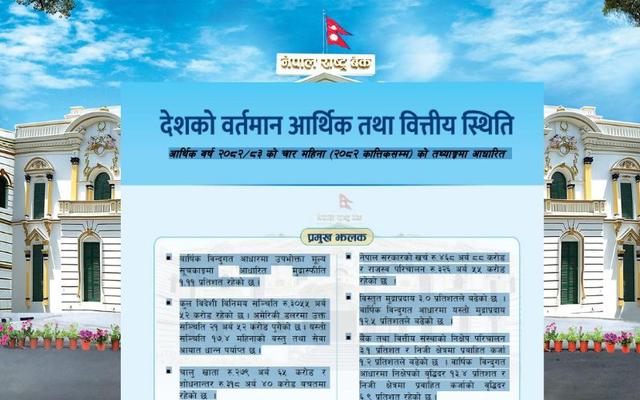Total Deposits at 120% of GDP: Dominance of Class "A" Banks, Minimal Contribution from Class "B" and "C"
Author
Nepsetrading

Nepal’s banking sector continues to show a strong linkage with the national economy, as indicated by the latest financial indicators of deposit and credit in relation to Gross Domestic Product (GDP). The combined ratio of total deposits to GDP stands at a significant 120.26%, while the total credit to GDP ratio is 97.06%. These ratios reflect the depth of financial intermediation in the country and the level of trust the public places in financial institutions.
Breaking it down by institutional class, Class "A" commercial banks remain the dominant players, accounting for 107.34% of GDP in total deposits and 86.12% in total credit. This clearly illustrates their commanding presence in mobilizing public funds and extending loans within the economy. The robust financial infrastructure, large branch network, and higher capital base have helped Class "A" banks to maintain this lead, ensuring they serve as the backbone of Nepal’s banking system.
In contrast, Class "B" development banks, while playing a supportive role, contribute 10.69% of GDP in deposits and 9.14% in credit. Their impact is regionally important, particularly in semi-urban areas, but they are far from rivaling the dominance of commercial banks. Class "C" finance companies contribute even less, with only 2.24% in deposits and 1.8% in credit relative to GDP. These figures indicate that while they still cater to niche markets, especially in micro and small enterprise financing, their role in the overall financial ecosystem is minimal in terms of volume.
The disparity in these figures underscores the consolidated nature of Nepal’s banking sector, where a few large institutions handle the bulk of the country’s financial transactions. It also raises questions about the inclusiveness and accessibility of financial services offered by lower-tier institutions. While Class "A" banks have made progress in expanding their reach, the relatively low contribution of Class "B" and "C" institutions highlights potential areas for policy intervention, especially to enhance financial access in underserved communities.
In conclusion, while the overall deposit and credit ratios to GDP are high—signaling a healthy level of monetization and financial sector involvement in the economy—the concentration of financial activity in commercial banks points to both their strength and the need for deeper diversification in Nepal’s financial architecture. Encouraging broader participation of development and finance companies could lead to a more resilient and inclusive financial system in the long term.



